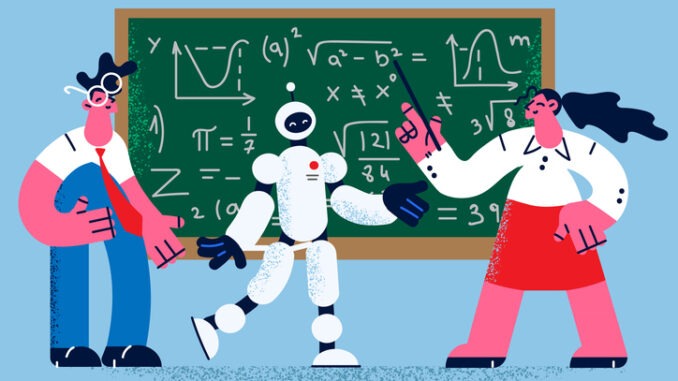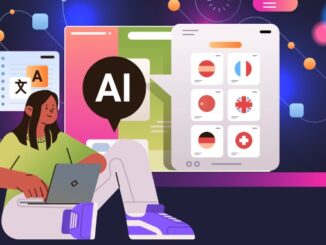
Gary Henderson recently attended the BETT conference in London where a significant amount of the discussion revolved around AI and its potential in education
I saw presentations by Sir Stephen Fry and from the Secretary for education while vendors at the show promised learning management solutions, interactive display technology and filtering and monitoring solutions, all of which used AI to maximise the value and impact of their services. Now I will admit that I am a big believer in the potential of artificial intelligence in education. In my own school we are trialling a variety of solutions including AI chatbots, an AI parental report writing assistant and the use of AI solutions to bring about efficiencies in our human resources and admissions departments.
Artificial intelligence has a significant potential to have a positive impact on schools, colleges and other educational establishments, but AI is no silver bullet, plus it also has several dependencies which need to be in place if we are to realise its full potential. So, while we talk so profusely about artificial intelligence in education, what are the things we have stopped talking about, what are the things we are now distracted from which maybe we should be giving a little more time?
Try the Shiny New Thing or do we Have a Plan?
One of the dangers I see with AI is the potential for it to be the shiny new thing and drive financial investment and resource investments, including that of teacher’s time, a resource which is in limited supply. We then might see schools and staff jump from one AI platform to the next without any real logic as to what platforms are being explored or used, plus no real agreement as to how the value of AI might be measured. AI implementation ends up looking like a scatter gun approach of trying different apps without any general direction in the choices of what platforms will be explored, by who and how they might be evaluated. Basically, we have AI implementation but without the necessary strategy in place to allow for solutions to be assessed against the values and needs of the school, its teachers and its students. And it might not only be that an AI strategy is lacking – it might also be that an overarching technology strategy is lacking or hasn’t been reviewed in some time. How can we decide what AI solutions to use if we don’t know what we are trying to achieve, what we consider important or our general direction of travel in relation to AI or even technology use.
Infrastructure and Good Foundations
Linked to strategy there is the need for discussion of the basic infrastructure needed to support technology use in schools, including AI use. If we don’t have a reliable internet connection, if we don’t have robust cabled and Wi-Fi networks and if we don’t have reliable end point devices, how can we hope to make effective use of AI across the school? But it isn’t just about the tech, it is also about processes such as the process for providing teachers with training, or to provide opportunities to share in relation to the use of AI or technology.
Technical support in relation to technology is also important as, if we wish teachers to become confident in the use of AI, then they need to know that the technology will be well designed and maintained, and that there is help available should they need it. Maybe before we get to looking at AI, we need to check that the basics infrastructure and process mechanisms are in place to support basic technology usage in the classroom, never mind AI.
Digital Citizenship
Linked to confidence in teachers, there is the need for those using technology to be aware of the benefits and risks, to be confident digital citizens or be digitally literate. I have long been an advocate of schools doing more in relation to teaching students about digital citizenship and what it means to live in an increasingly digital society.
I have seen quite a bit of discussion of how we need to discuss the implications, benefits and risks of AI which fits within the theme of digital citizenship, which is good however the focus on AI has meant that less time is being spent on the broader topic of digital citizenship. And I find it slightly ironic that our focus on AI might distract us from discussing digital citizenship including the development of critical thinking skills, when this skill is so very important in a world of using AI tools and consuming AI generated content. During BETT I heard AI described as a “weapon of mass production”, so we need to develop more discerning, critical and careful students able to navigate this deluge of content.
I keep finding myself talking about balance and have done so for a while. But it was only the BETT conference which got me thinking about our focus on AI in schools now, and questioning that, if we are spending much more time talking about and exploring AI in our schools, what is it we are spending less time on?
I continue to believe in the potential for AI to have a transformative impact however we need to be careful that our discussion of AI doesn’t distract us from other issues and other focus areas, including some of the prerequisites which we may need if we are truly to maximise the potential of AI. We also need to remember that some schools are dealing with issues with buildings, with behaviour, with funding or with many other challenges, which might just mean that for them AI, and more broadly technology, is simply not a priority now, and for me, that’s fine!


Be the first to comment